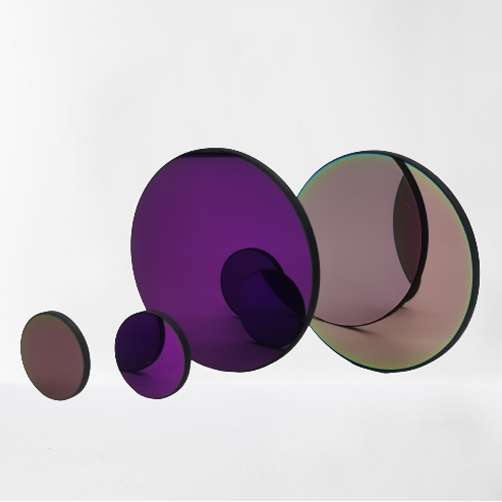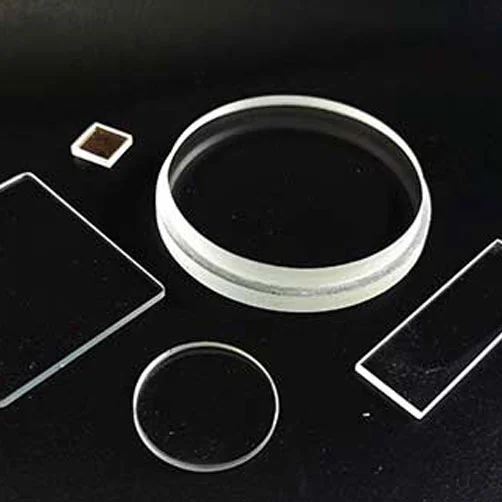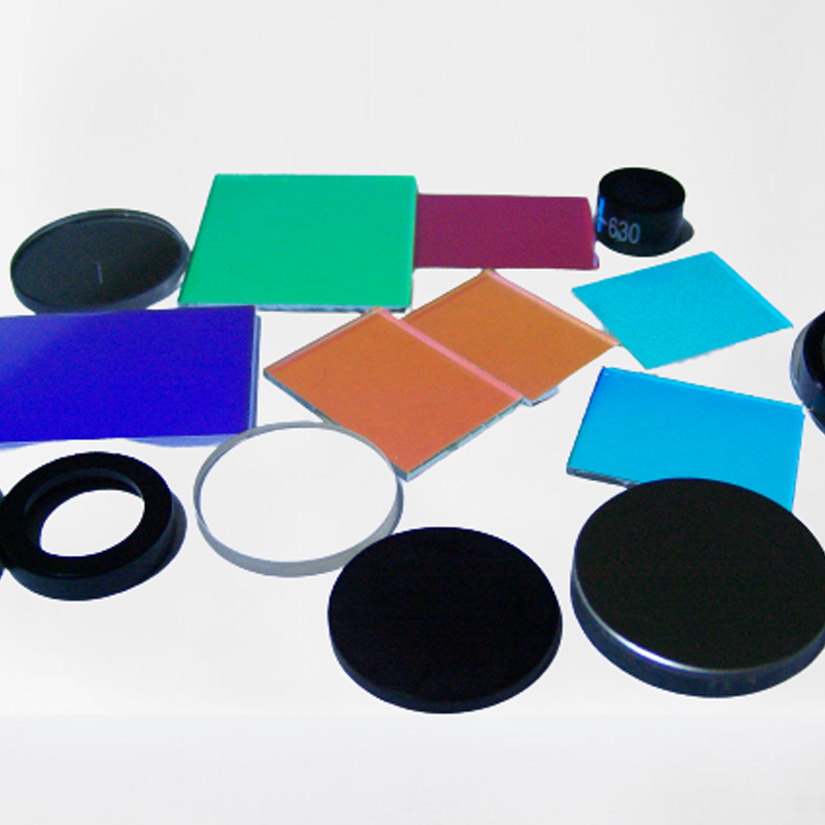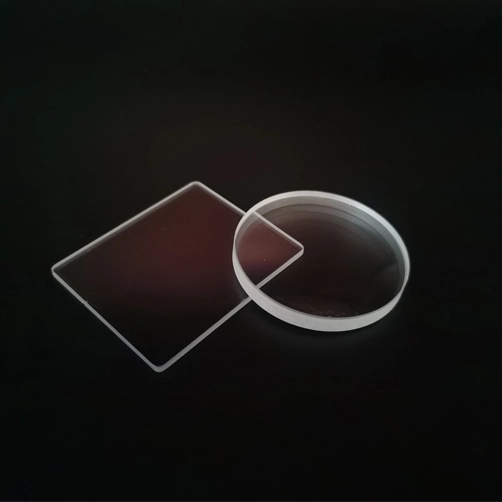
The edge of the optical filter is engraved with arrows to indicate the recommended direction of the light transmission filter. Although any side of the optical filter facing the light source can filter light, it is better to have the coated surface facing the light source.
This minimizes the thermal effect or possible thermal damage caused by the absorption of radiation outside the passband by the cutoff substrate or the colored glass optical filter layer.
When using the optical filter, the collimated light should be incident vertically on the surface of the filter. When the non collimated light or light is not incident vertically on the surface of the optical filter, the central wavelength (the wavelength corresponding to the peak transmittance) will move to the short wavelength, and the shape of the transmission band (passband) will change.
A slight change of the incident angle can effectively adjust the passband of the optical filter in a small range, but when the incident angle changes greatly, it will cause a large change in the center wavelength, and it will also significantly distort the passband shape, and even cause The passband transmittance drops significantly.
The center wavelength of the bandpass filter can be fine-tuned (~1 nm within the filter's operating range) by changing the temperature of the optical filter. This is mainly caused by slight thermal expansion or contraction of the film layer.
With the rapid development of high technology, optical filters have become common in our lives, but many people do not know how to deal with dirty lenses.
1. Ultrasonic cleaning
Ultrasonic cleaning is simple and fast, suitable for large quantities of optical filters. Insert the lens into a fixed rack, put it in ultrasonic clean water, and shake for 15 to 30 minutes.
2. Breathing method
If the lens is dirty, blow your breath on the dirty lens surface, and then wipe it with a dust-free cloth.
3. Alcohol wipe method
Pour a little ethanol onto the dirty glass surface, and wipe the clean, dust-free wipe from left to right and top to bottom from the lens surface.
If you find that the optical filter is still dirty, try again until there is no dirt. (Note: Do not wipe back and forth left and right, the more you wipe, the more dirty it will cause the opposite effect.)
4. Solvent cleaning
Commonly used solvents are aqueous solutions (acid or alkali solutions, detergent aqueous solutions, etc.); anhydrous solvents (ethanol, acetone, emulsions, etc.). The type of solvent is usually selected according to the nature of the contamination on the glass surface.
5. Scrub and dip
The simplest scrubbing method is to use absorbent cotton, lens paper, rubber roller or brush, dipped in water, alcohol, decontamination powder, chalk to wipe the glass surface. When scrubbing, the glass shall be prevented from being abraded, and the residual decontamination powder and chalk on the surface shall be cleaned with pure water and ethanol.
Another common method is to soak and clean the optical filter glass in a container filled with solvent. After soaking for a certain period of time, use tweezers or other special fixtures to take out the cleaned glass and dry it with a pure cotton cloth. The required equipment is simple, the operation is convenient, and the cost is low.



